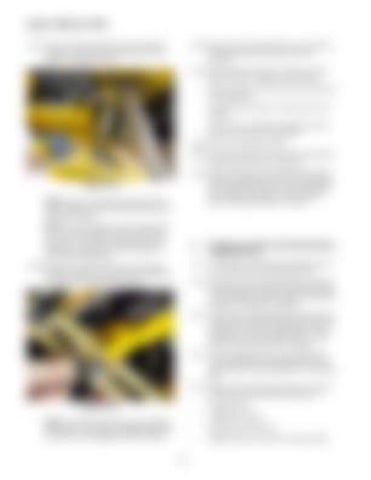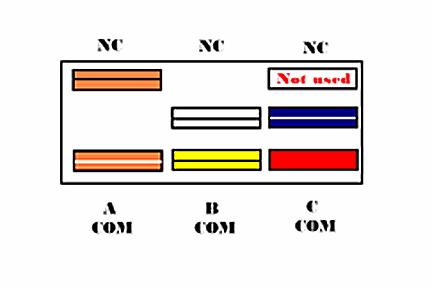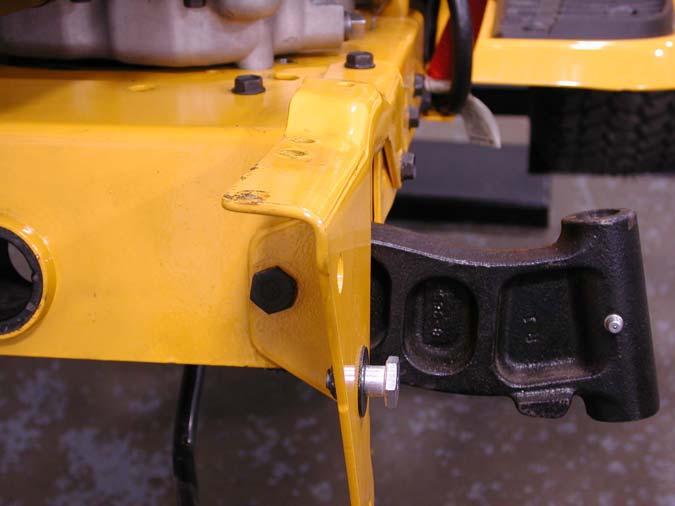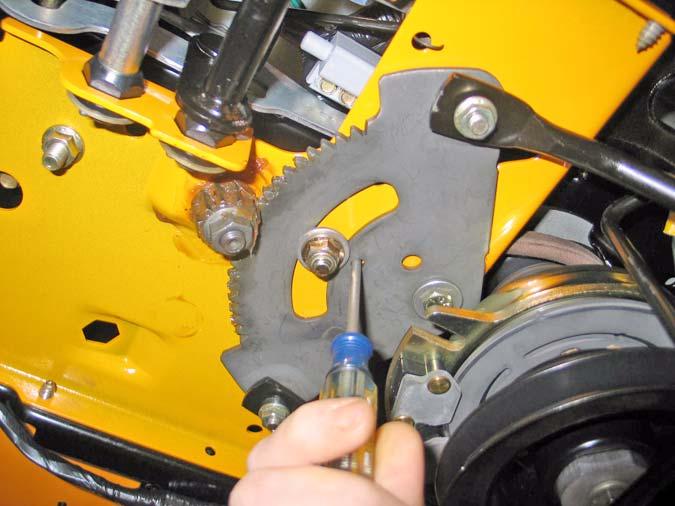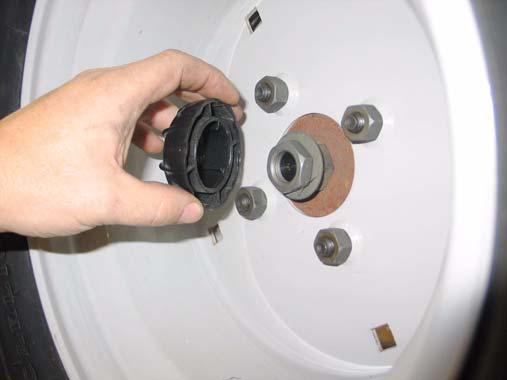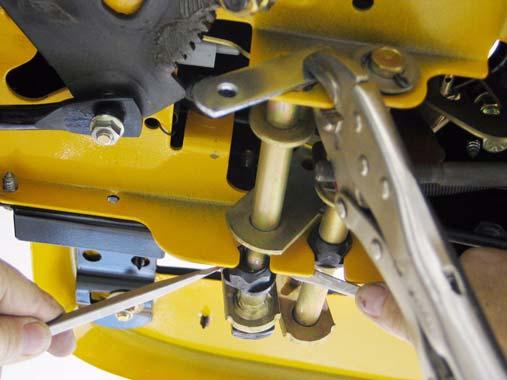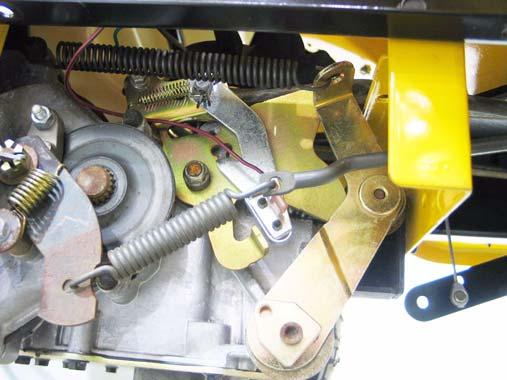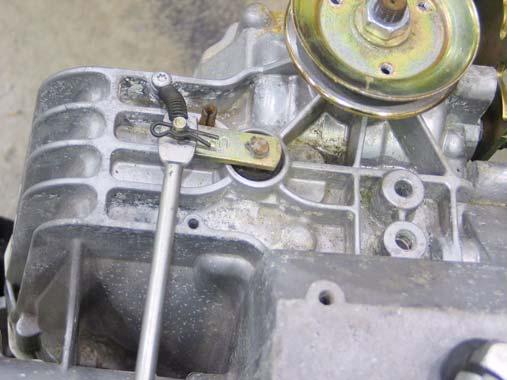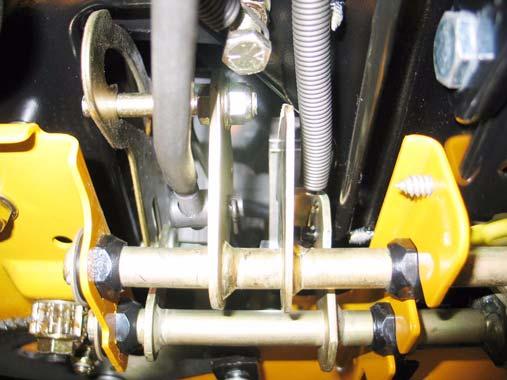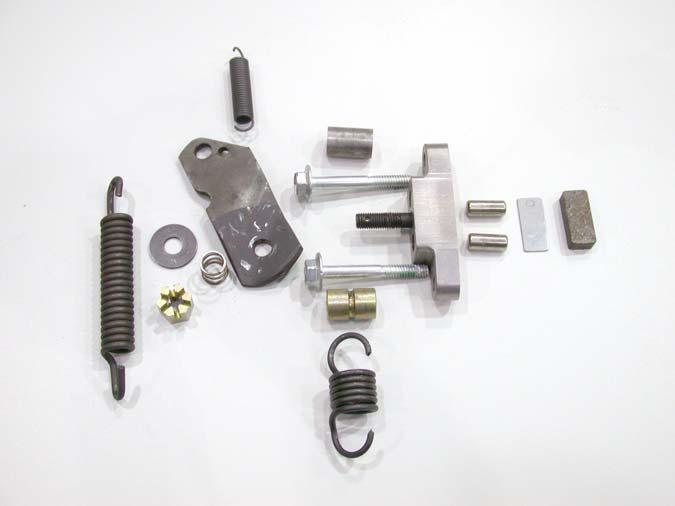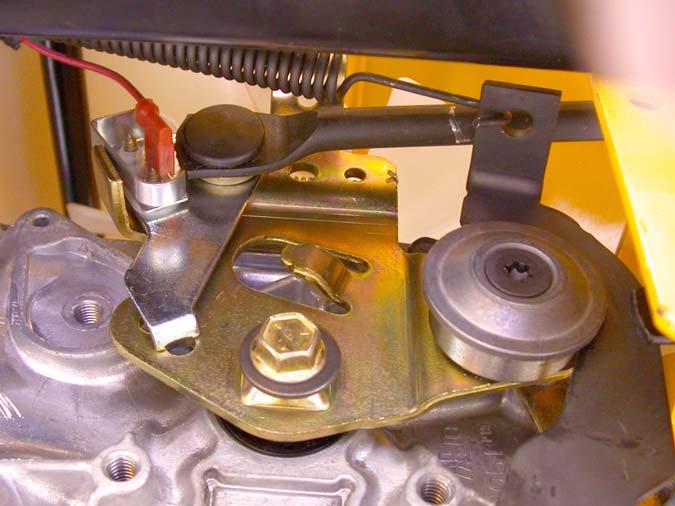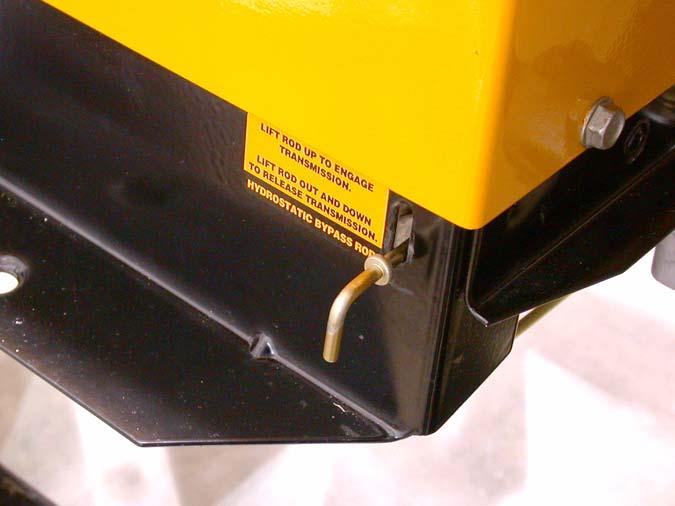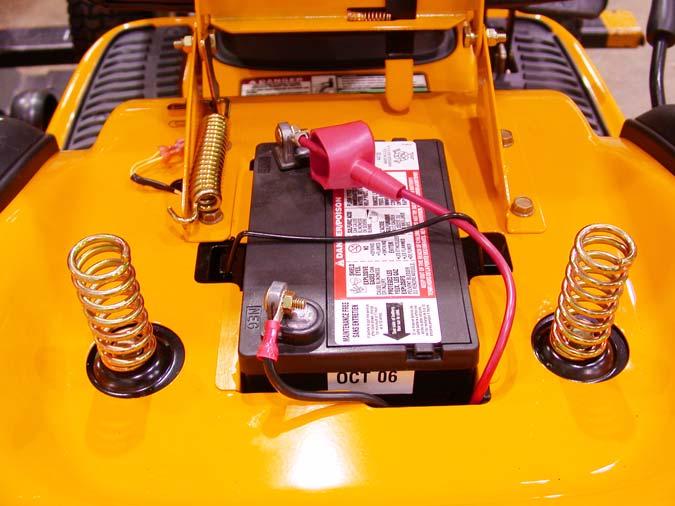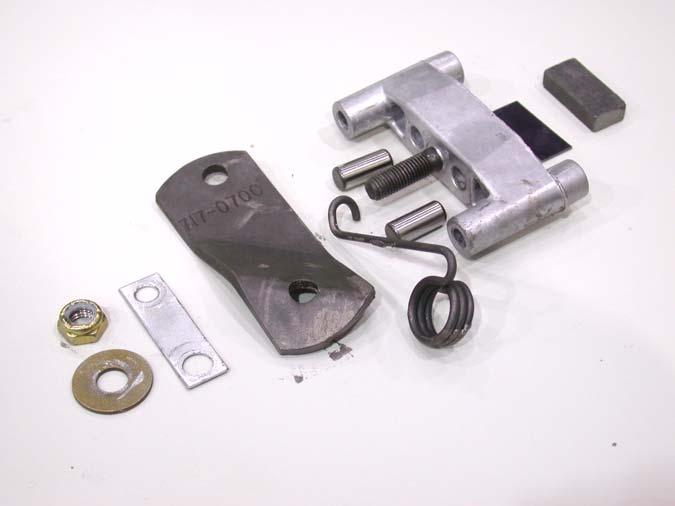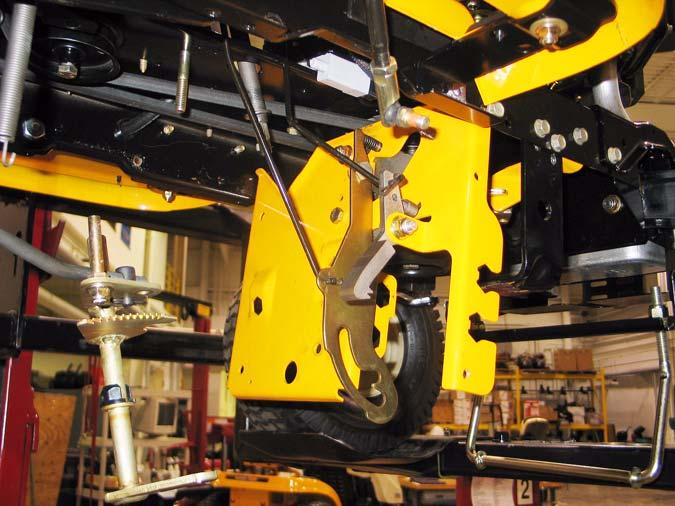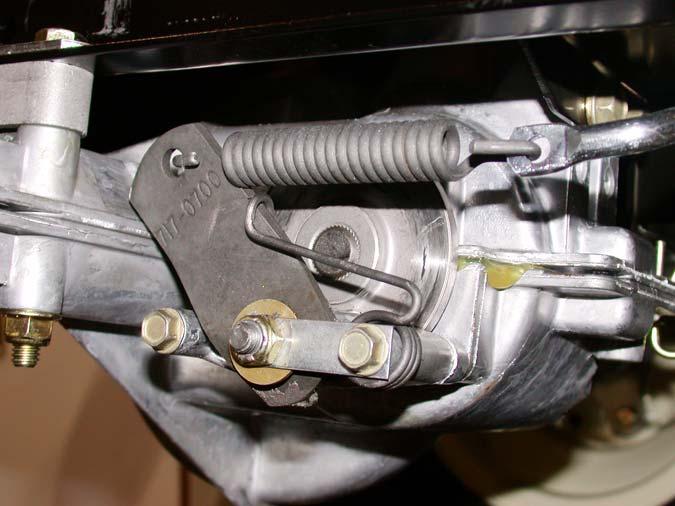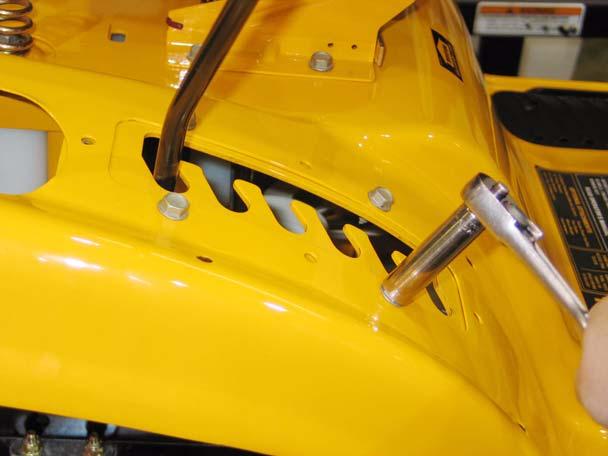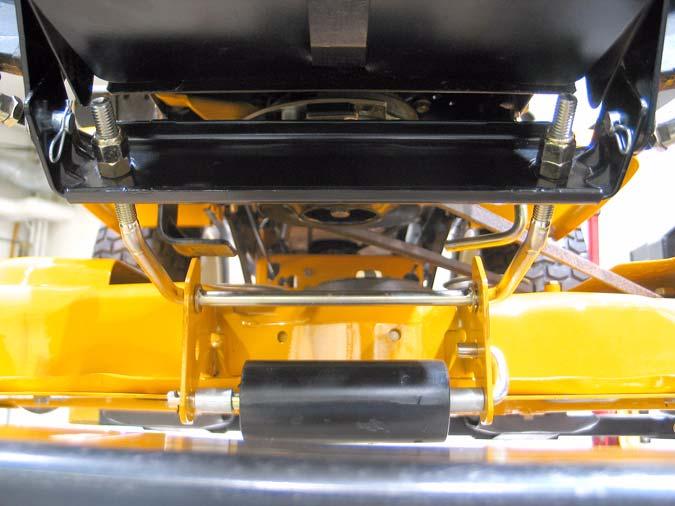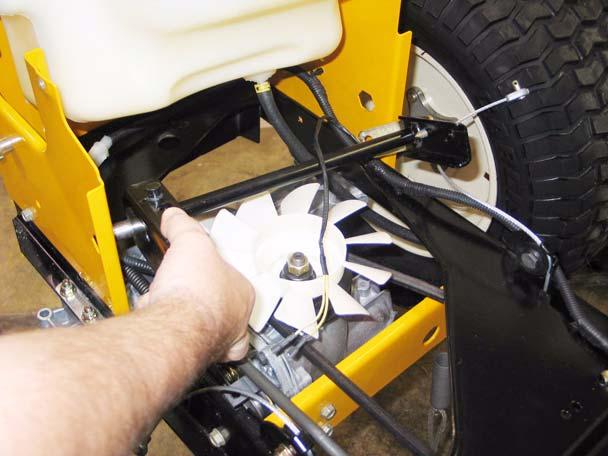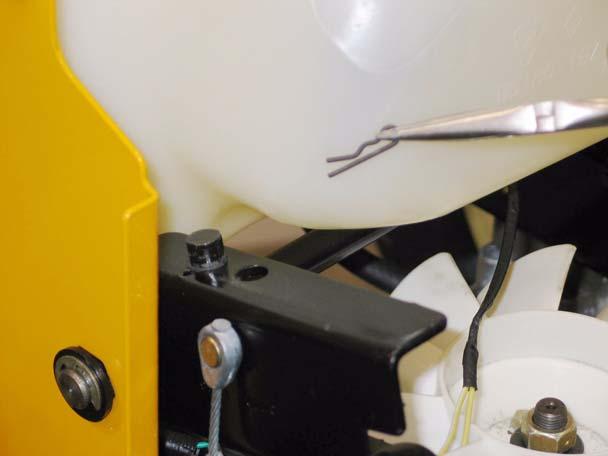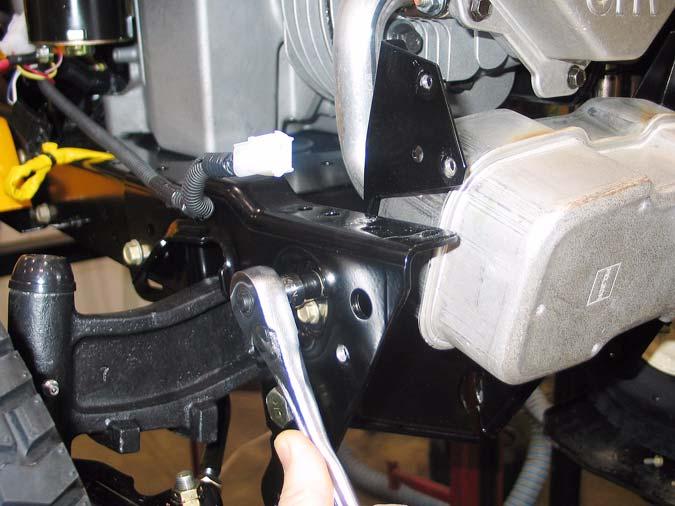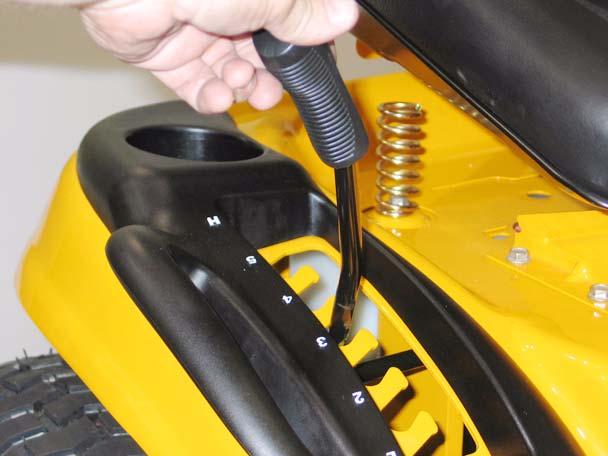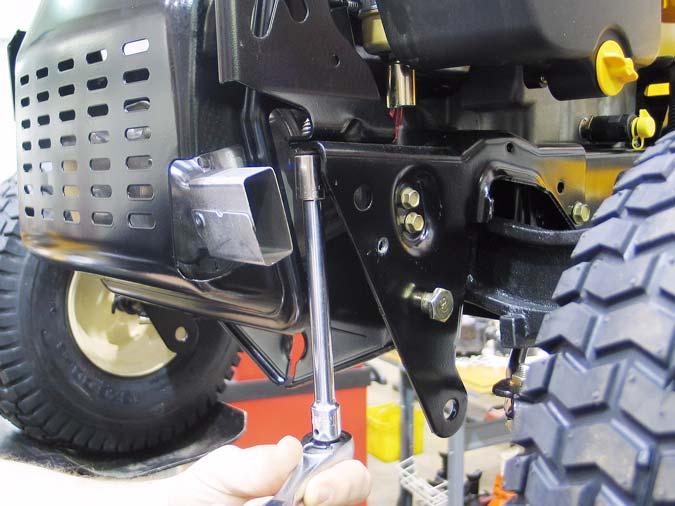Series 1000 and 1500 32.34. Press the brake pedal shaft as far outward as possible, and pry the worn bushing out of the bracket. See Figure 32.34.
32.36. Secure the inner bushing with a new cotter pin and the flat washer that was previously removed. 32.37. Move the pedal through it’s range of travel to check for bind. If binding is encountered: •
Bind in a portion if the travel may be caused by a bent pedal shaft.
•
Constant bind is likely to be caused by a bent bracket.
•
Also check for interference between the park brake and cruise control interlocks.
32.38. Correct any binding condition. 32.39. Connect the brake rod to the brake pedal shaft, and secure it with a new cotter pin. 32.40. After any brake service is performed, test the brakes as described in steps 24.2 through 24.4, then test-drive the tractor in a safe area that is free of hazards, obstacles, and by-standers before returning the tractor to service.
Figure 32.34 NOTE: A pair of vice-grips and a plate can be used to press the end of the shaft flush with the edge of the bracket NOTE: The inner bushing is a hex flange bushing. The outer bushing is similar, but has one open side. The “tooth” in the top facet of the bracket that supports the bushing registers in open side of the bushing.
33.
TRANSAXLE SERVICE AND MAINTENANCE: HYDROSTATIC GT
33.1. In normal use, the transaxle should last the life of the tractor with minimal maintenance.
32.35. Clean any corrosion or dirt from the surfaces where the pedal shaft contacts the the bushing, and slip the new bushings into place.
33.2. Because the transaxle dissipates heat through air-cooling of the housing, it must be kept clean of dirt and debris, and the cooling fan should be replaced immediately if damaged. 33.3. Cleanliness is vitally important when doing any service work that might expose the fluid or internal parts to any form of contamination. Clean thoroughly around any fittings, parts, or seals that are to be removed prior to removal.
Clean
33.4. Pressure washing is not recommended, and may contaminate the transmission fluid. Damage caused by contaminated fluid is not warrantable. 33.5. Before commencing internal repairs, eliminate all possible external performance issues: Figure 32.35 NOTE: Lubrication with grease may accelerate busing wear. If lubrication is applied it should be in dry form such as graphite or PTFE (Teflon).
62
•
Dragging brake
•
Maladjusted linkage
•
Partially open relief valve
•
Slipping traction drive belt/ low engine speed
